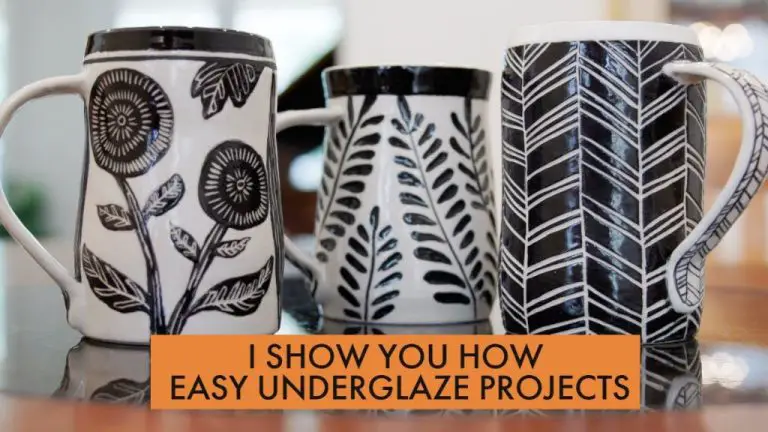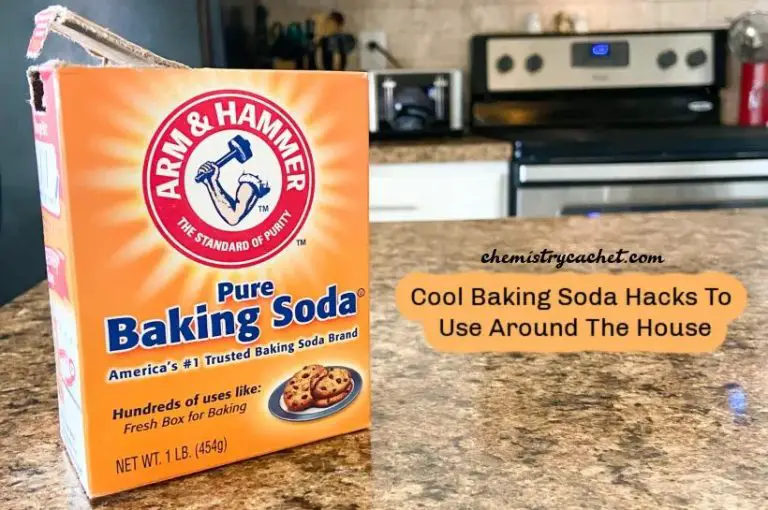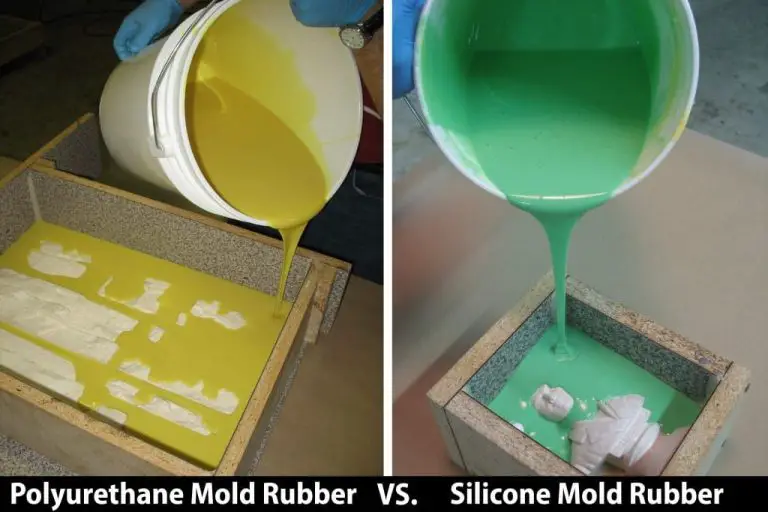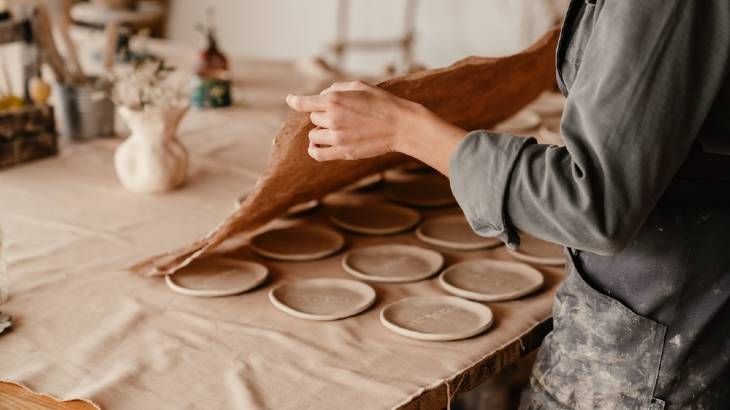What Temp Can Porcelain Bake At?
Porcelain is a ceramic material made by heating clay to high temperatures between 1200 and 1400°C to vitrify and become non-porous. The word “porcelain” comes from the old Italian word porcellana meaning cowrie shell, due to its resemblance to the surface of polished shells.
Porcelain first originated in China during the Tang Dynasty around 8th century AD, although some experts believe production started even earlier. It was revered as “white gold” and was exclusively produced for the Emperor and nobility at the time. Porcelain production later spread to the Middle East in the 9th century before reaching Europe in the 18th century.
Porcelain is known for its whiteness, translucency, hardness, and resistance to scratches and thermal shock. It is made from kaolin clay along with feldspar, quartz, and other minerals. Porcelain has many applications including tableware, sanitary ware, electrical insulators, dental restorations and more. It is highly valued for its beauty, durability and versatility.
Sources:
https://www.herendexperts.com/blog-posts/history-of-porcelain-the-secret-of-the-white-gold/
https://www.jdsauctions.com/11/porcelain-a-brief-history-of-porcelain-as-well-as-types-how-to-tell-the-difference-between-porcelain-ceramic/
Composition of Porcelain
Porcelain is made up of three main ingredients: kaolin, quartz, and feldspar. Kaolin is a white clay that provides plasticity and strength when fired. Quartz is a hard, granular mineral that gives porcelain its strength and structure. Feldspar acts as a flux, lowering the melting temperature of kaolin and quartz (Edwards, 2020).
In addition to the three main ingredients, small amounts of other minerals are added to porcelain to modify its properties. These include calcium carbonate to increase workability, magnesium carbonate to improve thermal shock resistance, and ball clay to increase plasticity (Kamseu, 2007).
A typical porcelain composition contains about 25-50% kaolin, 25-50% quartz, and 25% feldspar. The kaolin and quartz percentages can vary quite a bit depending on the characteristics desired. More kaolin results in more plastic, easily worked porcelain, while more quartz increases strength and structure.
The ingredient ratios are carefully balanced to achieve the excellent technical qualities porcelain is known for while retaining workability during production. When fired between 1200-1400°C, the raw materials vitrify into a strong, glass-like substance ideal for making durable tableware and sanitaryware.
Edwards, H. G. M. (2020). Porcelain and Its Composition. In Advanced Porcelain Materials. Springer. https://link.springer.com/chapter/10.1007/978-3-030-42192-2_1
Kamseu, E., Leonelli, C., Perera, D. S., Smith, D. S., & Lemougna, P. N. (2007). Characterisation of porcelain compositions using two china clays from Cameroon. Ceramics International, 33(6), 963-974. https://www.sciencedirect.com/science/article/pii/S0272884206000769
Firing Process for Porcelain
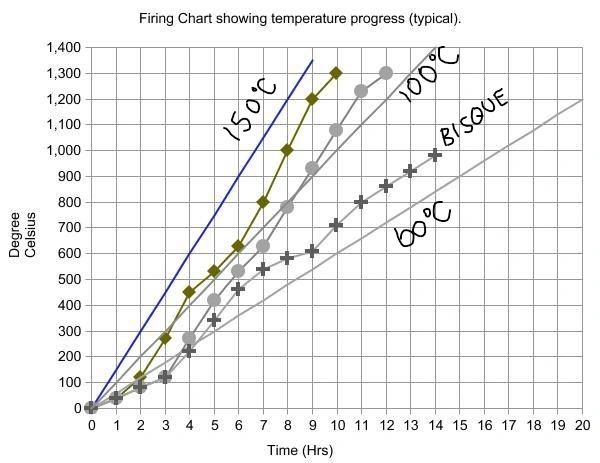
Porcelain goes through two firings – a bisque firing followed by a glaze firing. Bisque firing refers to the initial firing of the clay without any glaze. According to SoulCeramics, bisque firing for porcelain occurs between cone 04 and cone 06 which corresponds to 1945-2165°F (1063-1185°C). This initial bisque firing hardens the clay before applying glaze. Once glazed, the porcelain undergoes a second firing known as a glaze firing. Glaze firing temperatures for porcelain are generally between cone 6 and cone 10 which is between 2200-2345°F (1204-1285°C). This melts the glaze onto the surface of the bisqueware. Kilns used for firing porcelain are usually electric or gas kilns that allow precise control over heating and cooling.
Firing porcelain requires attention to details like placement of pieces in the kiln, heating rate, and soak times at maximum temperature. Careful firing helps avoid defects like warping, bloating, or cracking. Using the optimal temperature for the clay body and glazes is also critical.
Factors Affecting Firing Temperature
The firing temperature for porcelain depends on several key factors related to the clay body, glaze, and kiln conditions:
Clay body ingredients like kaolin, quartz, and feldspar affect firing temperature. Higher kaolin content requires more heat, while higher feldspar lowers maturation temperature. Standard porcelain bodies mature between 2381-2455°F (1305-1346°C) [1].
Glaze ingredients also influence firing temperature. Glazes with high silica require higher temperatures compared to glazes with fluxes like calcium, magnesium, and zinc which lower maturation points. Compatibility between clay and glaze is crucial.
The type of kiln affects firing temperature range. Gas kilns allow more precise control over heating and cooling whereas electric kilns have inherent lag in elements reaching peak temperature. Fast firings in under 60 minutes require higher peak temperatures compared to slower 12-hour cycles [2].
Firing cycle profiles impact temperature. Shorter cycles need rapid heating and cooling whereas longer soak times allow minerals to mature at lower peak temperatures. Fast firing can cause under-maturation defects.
Typical Firing Temperature Range
Porcelain typically requires two firings – a bisque firing and a glaze firing. The temperature range differs between these two firings:
- Bisque firing: 1245-1400°F – This initial firing is done on unfired clay to stabilize and harden the piece before applying glazes. Firing too low can result in the piece being underfired and fragile. Conversely, firing too high can cause warping or bloating. The ideal bisque temperature allows the piece to become hard while avoiding defects.
- Glaze firing: 2120-2340°F – The glaze firing fuses the glaze onto the bisque ware. Temperatures on the lower end may result in underfired glazes that can scratch off. Temperatures too high can melt the glazes completely or cause bloating. The optimal glaze temperature fully matures the glaze for a glassy surface.
Most porcelain clays are formulated to fire optimally within these typical temperature ranges. Following the manufacturer’s specific firing recommendations for a particular clay body is advised.
Effects of Underfiring
If porcelain is fired at too low of a temperature, it can result in the clay not being fully vitrified. This means the clay particles did not fully melt and fuse together, leaving the porcelain weaker and more porous (source).
Underfired porcelain tends to be opaque and chalky in appearance, lacking the clear, glass-like quality of properly fired porcelain (source). The opacity is caused by incomplete sintering and vitrification.
The weak, porous structure of underfired porcelain also makes it prone to breaking and damage. Moisture can penetrate the unvitrified clay body, potentially causing cracks and deterioration over time. Pieces may also crack or break more easily during handling or glazing if the clay body lacks sufficient strength from proper vitrification (source).
Effects of Overfiring
Overfiring porcelain can lead to several issues including deformation, glaze defects, and bloating. According to Contartesi (2019), overfiring porcelain tiles can result in anticipated deformation caused by viscous flow of the glaze. This deformation occurs when firing temperatures exceed 1150°C. Glaze defects are also common, as excessive heat can cause glazes to become under-fluxed. Bloating is another effect of overfiring, as porous materials expand when fired above their vitrification temperature. According to responses on Quora, bloating causes wares to become misshapen or cracked.
How to Determine Correct Firing
There are a few methods that potters use to determine the ideal firing temperature for a specific clay body or glaze:
Test tiles – These are small tiles made from the clay body that are fired to different temperatures in order to evaluate the physical changes. According to this guide, test tiles can reveal the temperature at which the clay vitrifies. Checking for signs of underfiring or overfiring on the test tiles helps narrow down the optimal temperature.
Pyrometric cones – Special pyramid-shaped cones are placed inside the kiln to visually indicate when certain heatwork temperatures are reached. As explained in this kiln firing chart, pyrometric cones bend and melt at specific temperatures which have been carefully calibrated in a laboratory. Using a series of cones with different melting points is a precise way to verify the kiln temperature.
Kiln sitter – This is a mechanical device installed in the kiln which triggers the kiln to shut off when it detects the cone bending from the heat. According to this guide, proper calibration of the sensing rod is required so the kiln sitter shuts off at the appropriate cone temperature.
Firing Tips for Porcelain
Proper firing is crucial for achieving optimal results when working with porcelain. Here are some tips for firing porcelain clay:
Ensure even heating – Sudden rises in temperature can cause cracking or warping. Bring the kiln up to temperature gradually, no more than 200°F per hour. Maintain an even temperature throughout the kiln by using cones or kiln sitters. Place pieces at least 1 inch apart so heat can circulate around them.
Hold at peak temperature – For cone 6 porcelain, maintain 2125°F for 8-10 hours. This allows the clay and glazes to fully mature. Shorter hold times can lead to under-fired pieces.1
Proper cooling – Cool the kiln at the same gradual rate as it was heated, about 200°F per hour. Quick cooling can cause uneven contraction in the clay leading to cracks and breakage. Let pieces fully normalize to room temperature before removing them from the kiln.
Test fire – Always do test tiles first to ensure your clay and glazes fire properly. Check for signs of under or over-firing and make adjustments before firing finished pieces.
With careful firing, porcelain can achieve the hard, dense results it is prized for in the ceramic arts.
Conclusion
In summary, porcelain requires high firing temperatures between approximately 2,300-2,500°F in order to fully mature and achieve optimal hardness and translucency. Proper firing is crucial for developing porcelain’s characteristic vitreous, glass-like quality. Underfired porcelain will be porous and prone to breakage, while overfired porcelain risks warping or bloating. There are many factors that can affect the ideal firing temperature, such as kiln type, thickness of pieces, and specific clay composition. By carefully monitoring cone packs, observing test bars, and adjusting firing schedules, ceramic artists can determine the perfect high fire range for their porcelain work.
When done correctly, the firing process transforms soft, fragile porcelain into a strong, durable ceramic able to withstand repeated use and last for generations. Mastering the firing requirements unlocks porcelain’s full potential for creating delicate, detailed pieces with refined white color and smooth surface. With patience and practice, ceramicists can consistently produce museum-quality porcelain worthy of pride.

